As a higher-ed marketer, it’s challenging for you to connect with prospective and incoming students through digital channels.
You’re not only competing against other institutions, but the general digital noise of the culture.
To get attention, you have to hold attention. That demands fresh, interesting, and relevant content that stands out during the selection process while building trust.
Do that and word-of-mouth will quickly spread. To help you, here are 13 ideas for your higher-ed content marketing strategist to consider.
1. Campus “Listicles”
“Listicles” don’t have to be shallow clickbait-y kind of content. They can be lists of interesting facts or useful information about your institution.
The easy-to-digest layout highlights aspects of your university that prospective students would find appealing or be curious to know about. The short punchy format means these articles are more likely to get read.
Listicles are often easy to put together – simply identify a topic, gather 10 to 20 talking points and elaborate each with one or two paragraphs.
But it’s not only facts and figures–it’s a great way to deliver short interviews or snippets of conversations with students – e.g. 10 Surprising Reasons Why Students Love Our School.
Listicles aren’t limited to blog posts – you can make a slideshow/video or create an infographic to encourage social sharing.
Example: Top 10 Reasons You Should Attend Oklahoma State University
2. Engaging Student Stories
Storytelling is an essential component in successful content marketing.
It’s not just about recounting the history of how your institution was founded or what it had achieved over the years.
Tap into the stories of individual students, faculty members, sports teams, or academic departments to deliver a real and personal experience of what it’s like to be part of the community.
While it’s not practical to write a story about every student, you can create a “canvas” of these students to tell the story around the culture and community.
It’s a great opportunity to foster a personal and emotional tie with prospective students and humanize the university, which is often perceived as faceless, intimidating, and rife with bureaucracy.
These stories are not only about the individuals or the institution but also need to explain what your institution stands for and why your readers should care.
Example: Student Spotlight at NYU Wagner
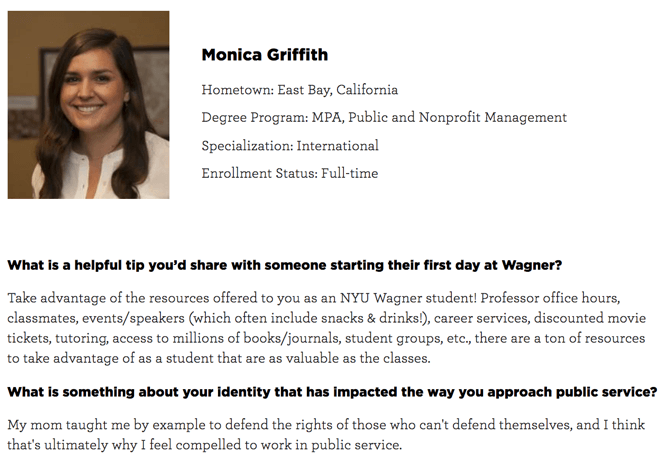
3. Timely Social Media Updates
Sharing videos and photos on social media is a great way to give prospective students a glimpse of campus life.
Not only are you showing up where your audience is hanging out and having conversations but you’re also giving them a peek into your institution in a way that fosters personal and emotional connections.
Encourage the creation of user-generated content with the use of branded hashtags for campus events. You can later track down these posts and repurpose them for other content, such as blog posts and slideshows.
Different student bodies gravitate toward different social media. Make sure you’re addressing the right audience on the right channels and use the appropriate tone and format.
These updates can show how new students are enjoying their environment, create a sense of community, show snippets of student life, or share “beauty shots” of the campus.
Example: Kansas State University on Twitter
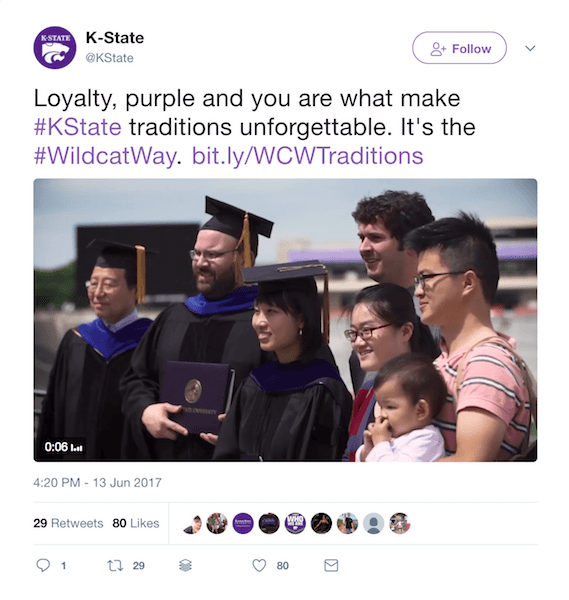
4. College-Entry Information, Checklists, And Worksheets
Start cultivating trust and relationships with your prospective students early on by sharing valuable resources to help them through their college or grad school application journeys.
Tips on how to prepare for standardized exams such as SAT, GRE, or LSAT, checklists on documents required for their application, or cheat sheet on deadlines of key steps are all helpful information to position your institution as a helpful ally and give you the opportunity to start the conversation early on in their decision-making process.
Example: New student checklist at Georgetown University
5. Downloadable Guides
Delivering valuable content is a great way to cultivate trust and relationships. In-depth topics, such as how to apply for a scholarship or budget for college, often require a format longer than a regular blog post or a 5-minute YouTube video.
These are great content ideas for downloadable guides, often created in PDF formats, so students can access the information whenever they need it. You can also offer interactive worksheets to help students apply the information.
Such long form content presents a great opportunity to repurpose existing materials. Since the guides are substantial pieces of information, you can use them for lead generation to collect emails of prospective students so you can follow up with additional content and information.
Example: Digital Viewbooks at Catawba College
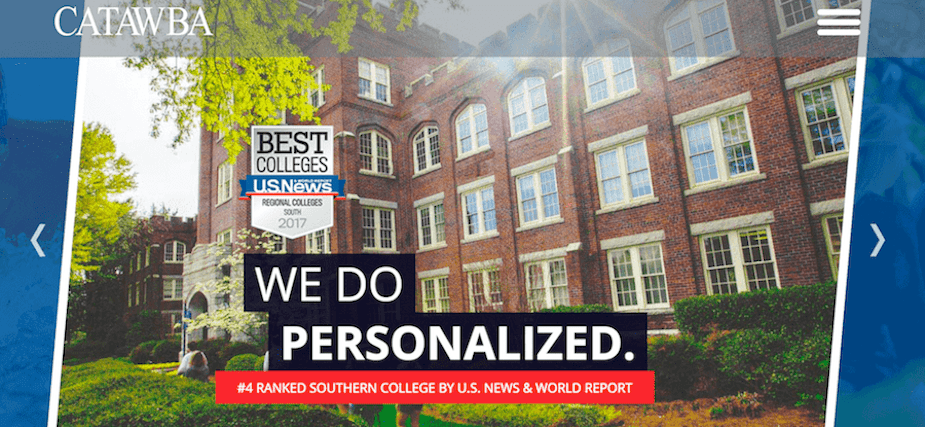
6. Interactive Tools
Navigating a university’s website can be a daunting task for prospective and incoming students who already have to tackle a long list of to-do’s.
Moreover, having great content on your website isn’t going to help if your audience can’t find what they need.
Develop interactive tools, such as quizzes to help students narrow down their decisions and point them to the relevant content so they can get the information they need.
Example: Take The Majors Quiz at St. Louis University
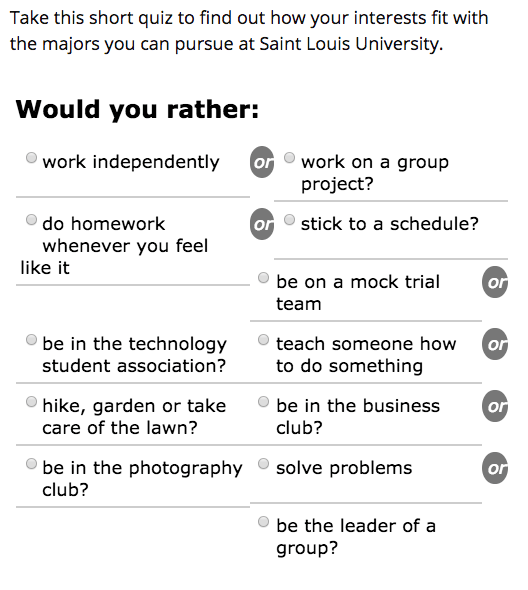
7. Automated Email Campaigns
Students (and parents) are receiving a lot of emails from universities so you want to design campaigns that provide value without adding to the sense of overwhelm or confusion.
Instead of sending one “epic” email with too much information, design a drip email campaign to deliver relevant content in a timely manner.
You can start off the campaign by familiarizing students with the basics, and then introduce them to the campus culture and community. You can share stories through student spotlights or encourage interactions and engagement by promoting your social media channels.
In addition, you can program campaigns to send out additional content based on trigger – e.g., if a recipients click on a link, sign up for a webinar or submit a form, they will get additional content on that topic.
8. Student-Run Blog
Your content needs to build trust so it’s important to be open and honest about everything that’s going on in your institution.
However, people are skeptical about highly polished press-ready information released through “official channels.” They want to see what’s really happening from a variety of perspectives.
A student-run blog is a great way to offer different views of campus lives in a real-time, candid manner that inspires trust. It could cover everything from study tips to nightlife, as well as the highs and lows of being a student.
Example: Manchester University
9. How-To or Interactive Webinars
Webinars are great for capturing a prospective student’s attention for a relatively long period of time – often 45 minutes or more.
It’s a useful tool to reach out-of-state or international students and give them the opportunity to experience the different facets of your institution.
Most webinar software allows participants to interact with the host via chat, so prospective students can ask questions in real-time.
Here are some ideas for webinars:
- Tips and direction on how to navigate the application process successfully
- An overview of the school’s curriculum and what students can expect when they enroll
- Discussion with a department dean about what’s happening in an academic unit
- Q&A with admission staff, faculty or students
Example: College Board Planning Webinars
10. Live Chat
You can drive traffic to your website and build trust with prospective students by offering useful tools to help them in their application process.
One way to do this is by installing live chat with an admissions rep, counselor or even students to answer questions in real-time. This doesn’t have to be a 24-hour commitment! You can set up live chat for only a few select hours.
Example: Brightwood College
11. Music Playlists
People connect through music. You can use events such as football games, spring break, or new semester to inspire the creation of campus-friendly playlists. Creating a playlist on YouTube, Spotify or Apple Music would be a great way to share music with students. Ask for student suggestions via social media to make it an interactive experience.
12. Apps
Building and maintaining an app takes commitment, however, it’s becoming essential if you want to stay relevant and valuable in the world of smartphones and mobile Internet access.
A mobile app is a great way for students to get helpful tools and information or check the status of their applications. Functionalities can include campus maps, transportation timetable, or admissions information.
Example: See this great list of university apps at ModoLabs
13. Infographics
Infographics can help you present dense data or instructional materials in an easy-to-ready and digestible format.
You can use infographics to illustrate information about the institution, admissions process, available majors, financial aid information, student accomplishments, and more.
Infographics are great for sharing on social media. Pay attention to the image size that works best for each platform – e.g., if you have a very long piece of graphic, it will work well on Pinterest but may be hard to read on Facebook. You may crop the piece into smaller chunks to post on Facebook, Twitter or LinkedIn, and then link back to the full graphic on Pinterest.
Example: The University of Kansas
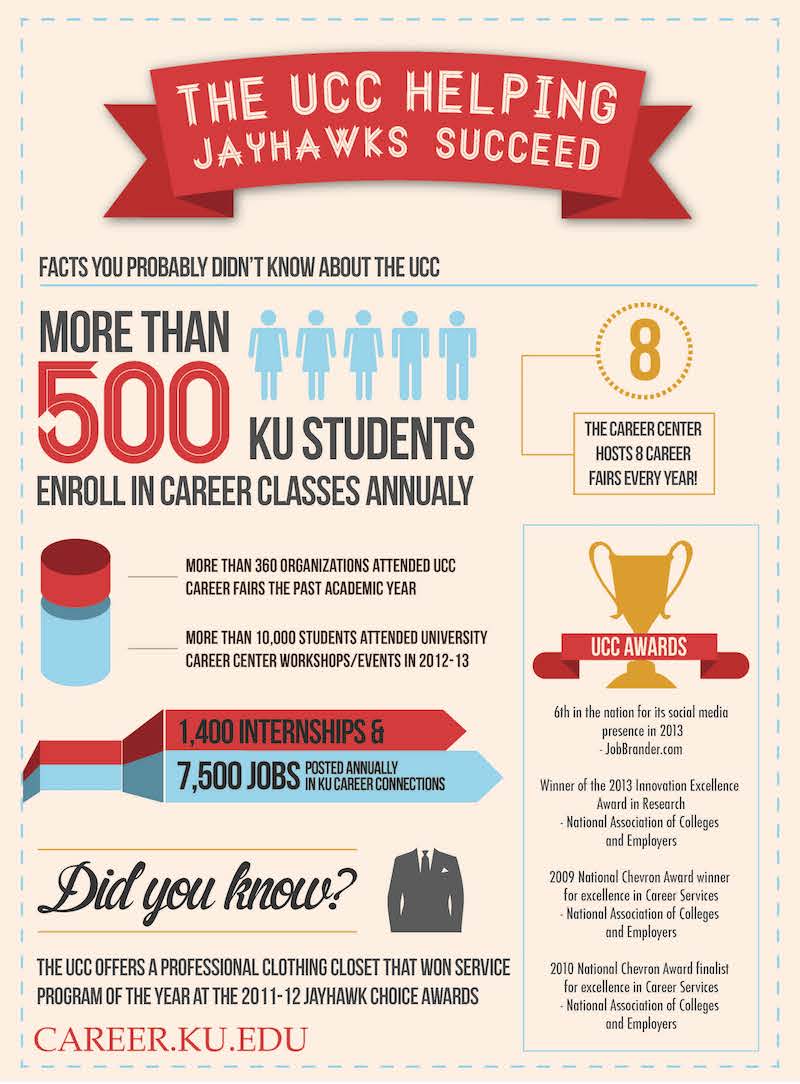
Don’t Forget the Basics Of Good Content Marketing
Regardless of format, make sure your content is relevant and tells an engaging story.
Your audience is going through an important stage of their lives. Create content that is helpful and empathetic to position your institution as their ally in navigating this new chapter of their lives.




